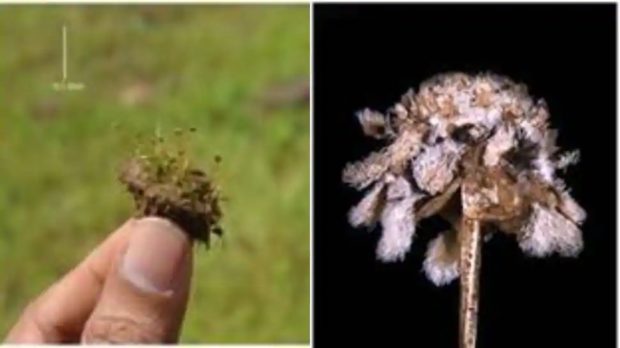
Scientists discover new species of pipeworts in Western Ghats
Team Udayavani, Oct 5, 2020, 8:30 AM IST

Photo: www.pib.gov.in
Kumta: Scientists from the Agharkar Research Institute in Pune have recently discovered two new species of pipeworts in the Western Ghats of Maharashtra and Karnataka, the Department of Science and Technology (DST) said on Sunday.
The species reported from Kumta, Karnataka is called Eriocaulon karaavalense (named after Karaavali, Coastal Karnataka region) and the other reported from Sindhudurg district of Maharashtra has been named Eriocaulon parvicephalum (due to its minute inflorescence size), it said.
Pipeworts (Eriocaulon) is a plant group which completes its life cycle within a small period during monsoon. It exhibits great diversity in the Western Ghats.
Around 111 species of pipeworts are found in India. Most of these are reported from the Western Ghats and the eastern Himalayas, and around 70 per cent of them are endemic to the country.
“One species, Eriocaulon cinereum, is well known for its anti-cancerous, analgesic, anti-inflammatory, and astringent properties. E. quinquangulare is used against liver diseases. E. madayiparense is an anti-bacterial from Kerala.
“The medicinal properties of the newly discovered species are yet to be explored,” the DST said.
The new species were discovered while exploring the biodiversity of the Western Ghats.
The scientists wanted to trace the evolutionary history of the genus Eriocaulon and made extensive efforts to collect as many species as possible from India, especially from the Western Ghats, the DST said.
“While critically examining our collection, we came across two accessions, which showed different floral characters than earlier known species. Hence, we studied morphology and its DNA to confirm the novelty,” said Ritesh Kumar Choudhary, the lead author of a study on the new species.
The study was published in ”Phytotaxa” and ”Annales Botanici Fennici” journals, the DST said.
Identification of the species belonging to Eriocaulon is very difficult as they all look similar, which is why the genus is often referred to as a ”Taxonomist”s nightmare”.
Its tiny flowers and seeds make it difficult to distinguish between different species, Choudhary pointed out.
Choudhary”s PhD student Ashwini Darshetkar said, “Future studies will focus on elucidating the evolutionary history of the genus in India. A thorough investigation of the phylogenetic relationship between all Indian species would also help in prioritising the conservation of threatened species in India.”
“We are also trying to develop DNA barcodes, which will enable us to identify the species with just a portion of the leaf,” he said.
Udayavani is now on Telegram. Click here to join our channel and stay updated with the latest news.
Top News

Related Articles More

Hosanagara tragedy: Husband dies in accident, wife ends life in grief on New Year’s Day

Contractor death: BJP claims suicide note has Minister Priyank Kharge’s name

FIR filed over BJP’s poster campaign against Minister Priyank Kharge

Kollur: Mookambika temple Tantri and priest Manjunath Adiga passes away

FIR registered against BJP leaders Narayanaswamy, Ravi and 11 others for unlawful assembly
MUST WATCH
Latest Additions

Employee arrested for Rs 1.47 crore diamond theft at jewelry firm

Rajasthan: 3-year-old girl pulled out of borewell after 10-day rescue operation, dies

Navy to commission 2 frontline warships, 1 submarine on Jan 15

Hosanagara tragedy: Husband dies in accident, wife ends life in grief on New Year’s Day

Contractor death: BJP claims suicide note has Minister Priyank Kharge’s name
Thanks for visiting Udayavani
You seem to have an Ad Blocker on.
To continue reading, please turn it off or whitelist Udayavani.




















